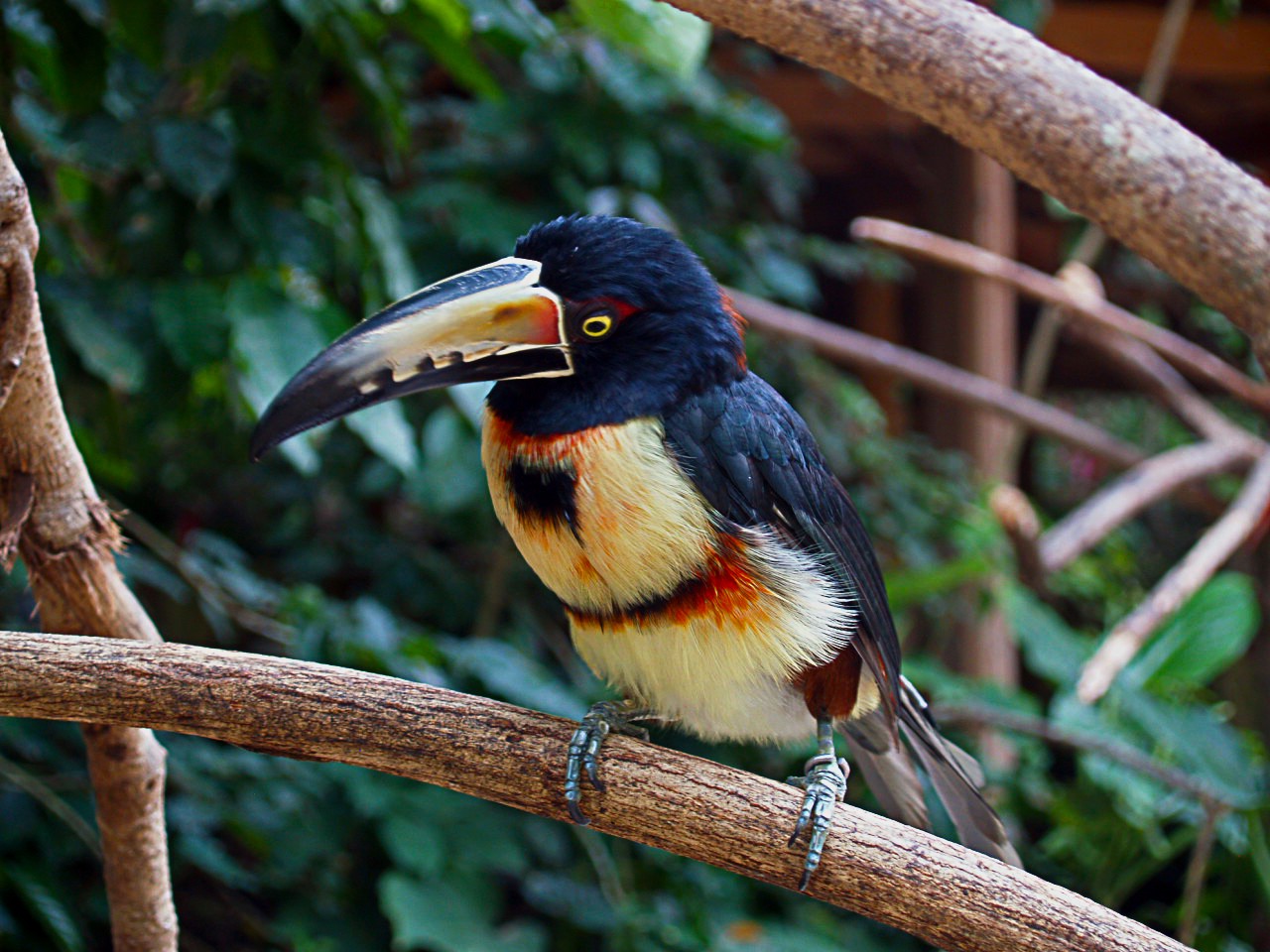Collared Aracari
A species of Aracaris Scientific name : Pteroglossus torquatus Genus : Aracaris
Collared Aracari, A species of Aracaris
Botanical name: Pteroglossus torquatus
Genus: Aracaris
Content
Description General Info
Description
Like other toucans, the collared aracari is brightly marked and has a large bill. The adult is typically 39–41 cm (15.5–16 in) long and weighs 190–275 g (6.7–9.7 oz) The sexes are alike in appearance, with a black head and chest and dark olive green upperparts, apart from a red rump and upper tail. There is reddish collar on the rear neck which gives rise to the English and scientific (torquatus) names. The underparts are bright yellow, with a round black spot in the centre of the breast and a red-tinted black band across the belly. The thighs are chestnut. The bare facial skin is black, becoming ruddy behind the yellow eye. The upper mandible of the bill is dull yellow, marked with a black saw-tooth pattern on the cutting edge, and a black tip. The lower mandible is black, and the legs are green. Juvenile collared aracaris are much duller, with sooty-black head and brownish green upperparts. The red rump and yellow underparts are paler, and the breast spot, belly band and bill pattern are indistinct. The call of the collared aracari is a loud, sharp pseek, or peeseek. 
Size
48 cm
Life Expectancy
20 years
Nest Placement
Cavity
Feeding Habits
Collared Aracari, an arboreal fruit-eater, also consumes insects, lizards, eggs, and small prey. Forages mostly in trees, showing a preference for variety and adapting to available food sources.
Habitat
The collared Aracari predominantly inhabits lowland evergreen forests, including forest edges and areas of advanced secondary growth. This species is also found in man-made plantations and gallery forests, particularly in semi-arid regions. The broader geographical regions of the collared Aracari encompass tropical environments where such forested landscapes are prevalent.
Dite type
Frugivorous
General Info
Feeding Habits
Bird food type

Fruit
Behavior
Small flocks, usually consisting of 6-15 birds, move through the forest with a rapid direct flight. 
Species Status
Not globally threatened.
